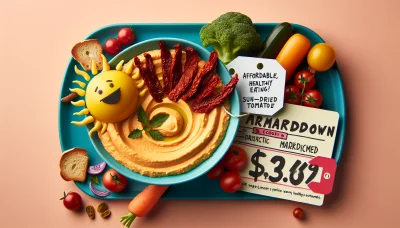How long to cook salmon at 350 Quiz
Test Your Knowledge
Question of
How Long to Cook Salmon at 350 Degrees
Cooking salmon properly is not just a matter of enhancing its flavor; it’s also crucial for maintaining a healthy diet. Salmon is a rich source of omega-3 fatty acids, proteins, and various vitamins and minerals. However, to fully benefit from these nutrients, salmon must be cooked to the right temperature. This ensures that it is safe to eat while retaining its nutritional value and moist, tender texture. Understanding the correct cooking time and methods can make a significant difference in your meals, contributing to a balanced and nutritious diet.
Benefits of Eating Salmon
- Rich in Omega-3 Fatty Acids
- Great Source of Protein
- High in B Vitamins
- Good for Brain Health
- May Reduce the Risk of Heart Disease
- Can Help Fight Inflammation
- Loaded with Selenium
- Contains the Antioxidant Astaxanthin
- May Benefit Weight Control
- Can Improve Bone Health
- Helps Maintain Skin Health
Preparation Tips for Baking Salmon
Before baking salmon at 350 degrees, it's important to prepare it properly to ensure the best flavor and texture. Start by patting the salmon dry with paper towels to remove excess moisture. This helps to achieve a better sear and texture. Next, season both sides of the salmon with salt, pepper, and any other spices or herbs of your choice, such as dill, garlic powder, or a squeeze of lemon for added flavor. If you have time, let the salmon marinate for at least 15 minutes or up to an hour in the refrigerator to enhance its taste. Finally, lightly oil a baking dish to prevent the salmon from sticking, and you're ready to bake. Following these simple steps will help you achieve perfectly baked salmon every time.
Ideal Cooking Time for Salmon at 350 Degrees
To achieve the best results when cooking salmon at 350 degrees, it is recommended to bake the salmon for 20-25 minutes. This time frame is ideal for salmon fillets that are about 1-inch thick. Ensuring the salmon is cooked through without becoming dry, it's important to check the internal temperature reaches 145 degrees Fahrenheit as recommended by the USDA. Adjust cooking time slightly for thicker or thinner fillets to ensure a perfectly moist and flaky finish.
How to Tell When Salmon is Perfectly Cooked
- The flesh flakes easily with a fork.
- Salmon changes from translucent (raw) to opaque (cooked).
- The meat feels firm to the touch.
- Internal temperature reaches 145°F (63°C) when measured with a food thermometer.
- Edges are slightly crisp, and the center is slightly translucent for medium-rare.
Healthy Side Dishes to Accompany Your Salmon
- Quinoa Salad with Lemon and Dill
- Steamed Asparagus with Olive Oil and Garlic
- Roasted Brussels Sprouts with Balsamic Glaze
- Sweet Potato Wedges with Rosemary
- Garlicky Kale with Pine Nuts
- Wild Rice Pilaf with Cranberries and Pecans
- Roasted Beetroot and Goat Cheese Salad
- Sautéed Spinach with Garlic and Lemon Juice
Storing and Reheating Leftover Salmon
To properly store leftover salmon, ensure it's cooled to room temperature before placing it in an airtight container. It should then be refrigerated and consumed within 1-2 days for the best quality. When reheating, gently warm the salmon in the oven at a low temperature, around 275°F, covered with foil to prevent it from drying out. This method helps maintain its moisture and health benefits. Avoid using a microwave if possible, as it can unevenly heat the salmon and affect its texture.












